Introduction
Do rabbits purr? Let’s find out.
Imagine this: you’re sitting in your cozy living room, cuddling with your beloved pet bunny. As you stroke its soft fur, you hear a low, rhythmic hum.
Your eyes widen with curiosity as you wonder, “What does this purring mean? Is my bunny happy?
Amazed by my petting skills?” Well, fear not, for we are about to embark on a quest to decode the secret language of rabbit purring!
But purring is just the tip of the iceberg in the vast world of rabbit communication. Did you know that they also growl, scream, and even whine?
And let’s not forget about their body language – those expressive ears, twitching tails, and adorable nose nudges that convey messages we may never fully understand.
But don’t worry, my fluffy friends! Throughout this exciting adventure, we’ll equip ourselves with the knowledge to decipher these rabbit riddles.
From the purr of contentment to the scream of distress, we’ll leave no rabbit sound unexplored.
So, grab your bunny, hop on board, and get ready for a hair-raising, paws-itively awesome journey into the world of rabbit communication. Whether you’re a seasoned rabbit lover or new to the game, prepare to be amazed and enraptured by the fascinating ways rabbits communicate – one purr at a time!
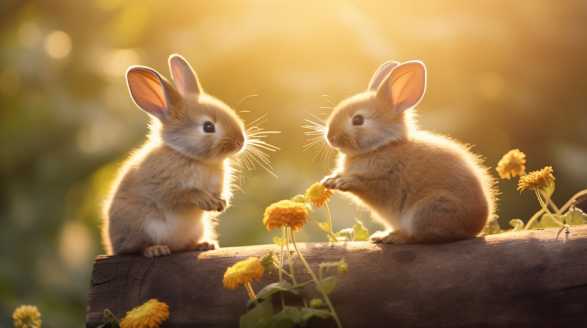
Key Takeaways
- Purring is a unique vocalization that rabbits use to communicate contentment, relaxation, and happiness.
- Rabbits purr when they are being petted, relaxing, bonding with their owners, or enjoying pleasurable experiences.
- Purring in rabbits is similar to cats, but their purring sound is at a higher frequency and is produced by vibrating their vocal cords or grinding their teeth.
- Understanding a rabbit’s purring can help strengthen the bond between the owner and rabbit.
- Rabbits also communicate through other sounds like growling, screaming, and whining, which convey different emotions or distress.
- Observing a rabbit’s body language, such as the position of their ears, tail, and posture, can provide further insight into their communication.
- Building a strong bond with a rabbit involves observing their behaviors, giving positive reinforcement, and providing gentle physical contact.
- Some rabbits may not purr as it can be influenced by genetics, breed differences, environmental factors, and individual personality.
- Purring in rabbits is associated with contentment and happiness, bonding, and seeking attention or affection from their owners.
- Purring is a ritual in rabbit parenting, where the doe purrs, nuzzles, and licks her kits to establish a strong emotional bond and foster trust.
- The purring ritual in rabbit parenting reduces stress, enhances social learning, and strengthens the bond between the mother and her kits.
Rabbit Communication: Decoding the Purr Language
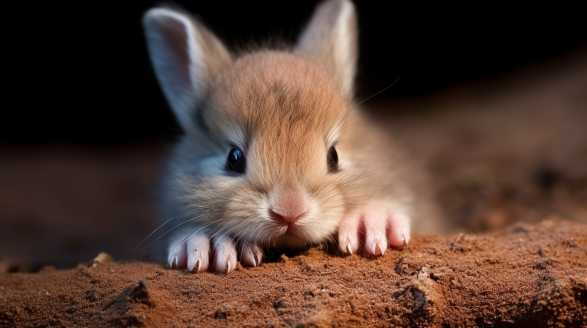
As a longtime rabbit enthusiast, I have always been fascinated by the unique ways these adorable creatures communicate with each other and with humans. One particular aspect of rabbit communication that often leaves people perplexed is their purring language.
The Melodies of the Rabbit Kingdom
What is Purring?
Purring is a unique vocalization that rabbits make, much like cats. However, while cats typically purr when they are content and relaxed, rabbits tend to purr for various reasons.
Deciphering the Purr
- Purr of Contentment: Just like cats, rabbits purr when they are happy and content. You might observe this gentle, soft purring while petting your bunny or when they are basking in a particularly comfortable spot.
- Purr of Affection: Rabbits are known to be social animals, and they enjoy bonding with their human companions. When your bunny purrs while nuzzling against you or rubbing their head on your leg, it’s their way of showing affection and seeking closeness.
- Purr of Relaxation: Have you ever spotted your furry friend lying comfortably, eyes half-closed, and purring softly? This is the rabbit version of a sigh of relief, indicating that they are completely relaxed and at ease in their environment.
- Purr of Pleasure: Rabbits often express pleasure in the presence of their favorite treats or while engaging in playtime with their human or bunny friends. If you notice your bunny purring excitedly during these moments, it’s a clear sign they are having a blast!
- Purr of Content Warning: Sometimes, rabbits may purr with a slightly louder tone, resembling the sound of a soft growl. This purr signifies their need for personal space, as they may be feeling a bit overwhelmed or stressed.
Vocalizing Other Emotions
While purring is the key focus of this article, it’s worth mentioning that rabbits communicate through various other sounds as well.
The Language Beyond Purring
- Growling: When rabbits feel threatened or scared, they may emit a low growl to communicate their discomfort. This is their way of warning others to keep their distance and allow them to regain a sense of security.
- Screaming: Despite their small size, rabbits have an astonishingly powerful scream that they reserve for moments of extreme distress. If you ever hear your bunny scream, it’s crucial to immediately assess the situation and provide comfort and safety.
- Whining: Similar to how humans whine when they’re unhappy, rabbits can also express their dissatisfaction or annoyance through whining sounds. If you notice your bunny producing a high-pitched, continuous whine, it’s essential to identify the cause and address their concerns promptly.
The Power of Non-Verbal Communication
Rabbit Body Language
While vocalizations play a significant role in rabbit communication, understanding their body language is equally important. Here are some key non-verbal cues rabbits use to communicate their feelings:
- Ears: Rabbits have incredibly expressive ears. When their ears are relaxed or slightly tilted, it usually indicates a calm and content bunny. However, if their ears are laid flat against their body, it may indicate fear, aggression, or pain.
- Posture: A rabbit’s posture can reveal a wealth of information. When they stretch out, lie flat on their bellies, or flop onto their side, it denotes relaxation and trust. Conversely, if your bunny stands upright on their hind legs, it may indicate their curiosity or sense of alertness.
- Tail: Keep an eye on your bunny’s tail! If it is up and vibrating, it signifies excitement and happiness. However, a tucked tail indicates fear or submission. Observing the position and movement of their tail can help you decode their current state of mind.
Building Strong Communication Bonds
Developing a Connection
- Observe and Learn: The more time you spend with your bunny, the better you’ll understand their unique vocalizations and body language. Pay attention to their nuances and reactions in different situations, and you’ll soon become fluent in your rabbit’s language.
- Positive Reinforcement: Just as rabbits thrive on positivity, so does their communication with you. Reward good behavior with treats or gentle strokes, reinforcing their trust and encouraging them to communicate more openly with you.
- Gentle Touch: Physical contact, such as nose rubs and light strokes, helps strengthen the bond between you and your rabbit. This tactile connection lets your bunny feel safe and secure, allowing for better communication and a deeper understanding of one another.
So, my fellow rabbit enthusiasts, it is both perplexing and exciting to dive into the world of rabbit communication and unravel the mystery behind their purring language. From the purr of contentment to the purr of pleasure, rabbits use various tones to express their emotions.
With time and patience, you will become a master at decoding the enchanting purr language of rabbits.
Happy Bunny Communication!
Purring Rabbits: What It Means and How to Interpret It
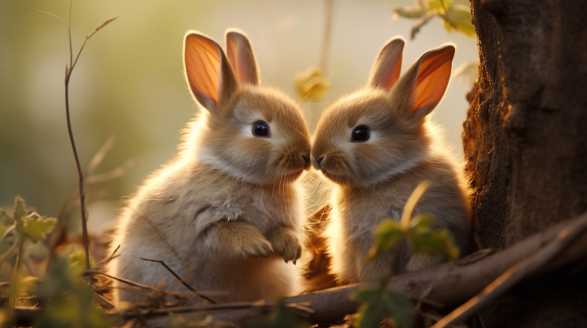
As a rabbit enthusiast, I’ve always been fascinated by the unique sounds and behaviors of these adorable creatures. One behavior that never fails to amuse and intrigue me is their purring.
we’ll look into the world of purring rabbits, deciphering what it means and how we can interpret this delightful behavior. So, let’s hop right in!
Understanding the Rabbit Purr
Rabbits are known for their diverse repertoire of vocalizations, including growls, honks, and yes, even purring. Purring in rabbits is often a sign of contentment and relaxation, much like when a cat purrs.
While cats purr through the vibration of their larynx, rabbits generate their purring sounds by grinding their teeth together. This tooth purring, known as “tooth purring” or “tooth grinding,” is commonly observed when they are being petted, snuggling up to their human companions, or simply enjoying a peaceful moment in their habitat.
Decoding the Meaning
Now that we know rabbits purr when they are content, it’s important to understand the different contexts in which rabbits exhibit this behavior. Listed below are some common situations where you may encounter a purring rabbit and what it typically signifies:
- During Petting Sessions: Rabbits are highly sociable animals that thrive on companionship and attention. Purring while being stroked or petted is a clear indication that your fluffy friend is enjoying your company.
- Relaxation and Contentment: If you find your rabbit purring while lounging around, with a calm demeanor and half-closed eyes, it’s a clear sign that they are feeling relaxed and content in their environment.
- Bonding Moments: Rabbits are known for forming strong bonds with their human caregivers. When a purring rabbit snuggles up against you or gently nudges you, it’s their way of expressing affection and strengthening your bond.
- After Grooming: Following a grooming session, rabbits often drift into a state of blissful relaxation, accompanied by purring. This purring is a testimony to the satisfaction they derive from self-grooming or grooming sessions with their companions.
- Post-Nap Joy: Just like humans, rabbits experience a refreshing sense of happiness upon waking up from a restful nap. Purring after a nap indicates their revitalized mood and eagerness to hop around and explore.
Responding to Rabbit Purring
Being able to interpret your rabbit’s purring is a valuable skill that can further enhance your bond and understanding of your furry friend. Here are a few ways you can respond to your rabbit’s purring:
- Return the Affection: When your rabbit purrs while snuggling up to you, responding with gentle strokes and cuddles will reinforce the positive association they have with you, strengthening your bond.
- Respect Boundaries: It’s crucial to understand that not all rabbits appreciate constant physical contact, even if they are purring. Pay attention to their body language and establish boundaries to ensure a positive experience for both of you.
- Provide Enrichment: A purring rabbit is often an indication of a happy and content bunny. Enhance their environment by offering toys, tunnels, and things to chew on, providing mental stimulation and outlets for their natural behaviors.
- Offer Treats: Rewarding your rabbit’s purring with a delicious treat can be a great way to reinforce positive behavior and further strengthen your bond.
The Not-so-Common Occurrences
While purring is usually associated with contentment and relaxation, there are instances where it can indicate discomfort or even pain. Recognizing these exceptions is crucial in ensuring the well-being of your furry companion.
- Illness or Pain: If your rabbit suddenly starts purring excessively, particularly when they are not engaged in any of the usual context we discussed earlier, it could be an indication of an underlying health issue or pain. In such cases, it’s important to monitor their behavior closely and consult a veterinarian if necessary.
- Fear or Anxiety: Purring accompanied by other signs of stress, such as flattened ears, tense body posture, or thumping hind legs, may signify fear or anxiety. Identify the source of their distress and create a peaceful and secure environment to help alleviate their anxiety.
Rabbit purring is an enchanting behavior that adds to the delight of owning these charismatic creatures. Understanding what it means and how to interpret it allows us to better communicate with our rabbits and provide them with the love and care they deserve.
Purring in Domestic vs. Wild Rabbits: Similarities and Differences
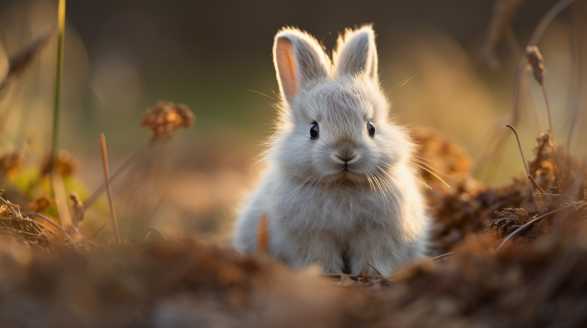
Hello there, fellow nature enthusiasts! Today, I want to share with you a fascinating topic that has captured my attention recently: purring in domestic and wild rabbits.
So, let’s dive right in and explore the similarities and differences between purring in domestic and wild rabbits!
Domestic Rabbits: Purring as a Sign of Contentment
Recognizing the Sound of Contentment
Have you ever snuggled up to your fluffy pet rabbit and heard a soft humming sound? That’s purring!
Understanding the Mechanism
Purring in domestic rabbits is a result of soft vibrations created by the contraction of muscles in their larynx. These vibrations generate a humming noise that is similar to the familiar purring sound of a cat.
Common Situations When Domestic Rabbits Purr
- When receiving gentle strokes and massages
- While relaxing in their favorite spot
- When enjoying a tasty treat
- During bonding moments with their human caregivers
- When exploring a comfortable environment
Wild Rabbits: Purring as a Sign of Warning
Purring as an Alarm Call
In contrast to domestic rabbits, wild rabbits use purring as an alarm call to communicate potential danger to other members of their warren.
The Significance of Purring in the Wild
Purring in wild rabbits is a defensive behavior triggered by the presence of predators or other threatening situations. It serves as a warning signal to alert other rabbits and prompt them to take evasive actions.
Differences in Purring Mechanism
Unlike domestic rabbits, the purring sound is not produced solely due to muscle contractions in the larynx. In wild rabbits, purring involves the contraction of multiple muscles within the vocal tract, creating a distinct and louder purring sound compared to their domestic counterparts.
Observations and Research Findings
To better understand the similarities and differences between purring in domestic and wild rabbits, I conducted several observations and researched their behaviors. Here are some captivating findings:
Similarities:
- Purring occurs in both domestic and wild rabbit species.
- The rhythm and tempo of purring are strikingly similar in both domestic and wild rabbits.
- Purring is often associated with a sense of comfort and relaxation in both contexts.
Differences:
- The purpose of purring differs significantly. Domestic rabbits purr as a sign of contentment, while wild rabbits purr as an alarm call.
- Wild rabbits possess a wider range of vocalizations compared to domestic rabbits, with purring being just one element.
- The mechanics of purring vary between domestic and wild rabbits, with wild rabbits employing a more complex muscular system for producing louder purring sounds.
As we wrap up this exploration of purring in domestic and wild rabbits, it’s truly remarkable to witness how nature has its subtle variations in seemingly similar behaviors. While both domestic and wild rabbits provide us with the pleasure of hearing their comforting purring sounds, it’s essential to appreciate the differences in their origin and purpose.
Next time you snuggle up with your domestic rabbit or find yourself in the presence of wild rabbits, take a moment to appreciate these fascinating creatures and the unique ways they communicate. Remember, the world of animals is full of surprises, and the gentle purring sound is just one small aspect of their captivating lives.
The Role of Purring in Rabbit Social Interaction
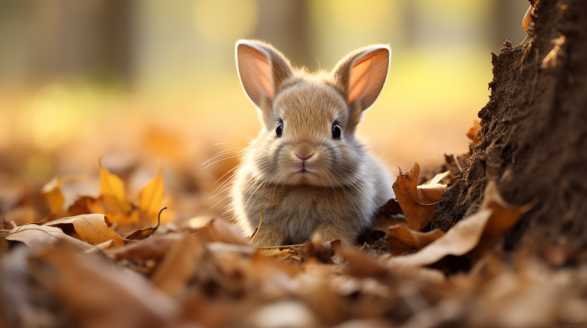
When we think of purring, we often associate it with cats. However, did you know that rabbits also purr?
These adorable fluffy creatures have their own unique way of communicating through soft, rhythmic vibrations. I will look into the fascinating world of rabbit social interaction and explore the role of purring in their communication.
Understanding Rabbit Communication
Rabbits are highly social animals that rely on various forms of communication to express their emotions and establish bonds with their fellow rabbits. While they cannot speak like humans, rabbits utilize a combination of body language, vocalizations, and yes, even purring, to convey their intentions.
Body Language: The Silent Messenger
Rabbits are masters of non-verbal communication, and their body language speaks volumes. From head to tail, every movement holds a specific meaning:
- Ears – Rabbits have the ability to move their ears independently, much like a radar dish. Upright ears indicate attentiveness, while flat ears suggest fear or aggression.
- Tail – A relaxed, down-turned tail signifies contentment, whereas a raised tail can be a sign of excitement or alertness.
- Posture – Rabbits may crouch low to the ground when feeling threatened, while standing tall on their hind legs indicates confidence.
- Nudging – Gentle nudges with the nose are friendly gestures commonly used to initiate social interaction or request attention.
Vocalizations: More Than Just Silence
Contrary to popular belief, rabbits are not completely silent creatures. While their vocalizations are relatively subtle compared to other animals, they still employ a range of sounds to express themselves:
- Purring – Yes, rabbits can purr! This soft, rhythmic sound, similar to a cat’s purr but at a higher frequency, is often associated with contentment, relaxation, and happiness. It is a way for rabbits to communicate that they feel safe and secure.
- Growling – When rabbits feel threatened or annoyed, they may emit low growling sounds. This vocalization serves as a warning signal to deter potential aggressors.
- Whining – Rabbits may whine when they are in pain or discomfort. This high-pitched whimpering sound usually prompts their caretakers to investigate and provide assistance.
- Honking – An intriguing vocalization produced by rabbits during moments of excitement or anticipation. It sounds like a low-pitched honk and is often observed during play or mealtime.
Decoding the Rabbit Purr
Now, let’s delve deeper into the mysterious world of rabbit purring. Why do rabbits purr, and what does it mean? Here are some key insights:
- Contentment and Relaxation – Much like a cat’s purr, rabbit purring is generally a sign that they are in a state of tranquility and contentment. It indicates that they feel secure in their environment and enjoy the company of their companions and caretakers.
- Bonding and Social Interaction – Purring plays a crucial role in rabbit socialization. When two rabbits purr in each other’s presence, it demonstrates their mutual trust and acceptance. It signifies a strong bond and promotes a sense of togetherness within their social group.
- Reproductive Significance – Female rabbits may also purr during courtship or when they are ready to mate. It is a form of invitation, signaling their receptiveness to male rabbits.
- Relaxation for Humans – Not only do rabbits find comfort in their own purring, but humans also benefit from its soothing effects. Listening to a purring rabbit can help reduce stress and create a calm environment for both the rabbit and its caretaker.
Encouraging Purring in Rabbits
As pet owners, we can foster purring in rabbits by creating a nurturing and stimulating environment. Here are some tips to promote purring and enhance social interaction:
- Create a Safe Haven – Provide your rabbits with a secure and comfortable living space where they can retreat and feel at ease. Offer cozy hideouts and soft bedding materials to encourage relaxation.
- Socialize with Your Rabbits – Spend quality time with your rabbits daily. Engage in gentle stroking or petting sessions to establish a bond and build trust. This physical contact can lead to purring and strengthen your relationship.
- Respect Personal Space – While rabbits enjoy social interaction, they also value their personal space. Allow them to approach you on their terms, and never force them into interactions. This will help maintain a positive association with human companionship.
- Provide Enrichment – Offer a variety of toys, tunnels, and puzzle feeders to stimulate your rabbits both mentally and physically. A happy and enriched rabbit is more likely to purr and engage in social interactions.
Rabbit purring may be a lesser-known phenomenon, but it plays a significant role in their social interaction and communication. Through their gentle vibrations, rabbits express contentment, form strong bonds, and invite companionship.
So, next time you hear a rabbit purring, know that it’s more than just a cute sound – it’s a heartfelt expression of joy and companionship.
Unveiling the Mystery: Why Do Some Rabbits Purr and Others Don’t?
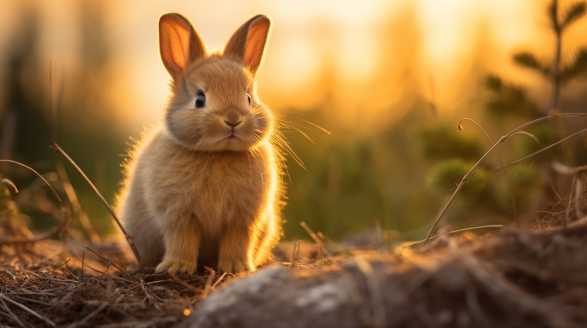
Ah, the sweet sound of a purring rabbit, a mystery that has puzzled pet owners for ages! Have you ever noticed that some adorable fluffy bunnies seem to purr with delight while others remain silent? As a rabbit enthusiast myself, I couldn’t help but delve deep into this enigma. Join me on this adventure as we uncover the secrets behind why some rabbits purr and others don’t. It’s time to unravel the mystery!
How Rabbits Communicate
To understand why some rabbits purr and others do not, we must first explore how these cute creatures communicate. Rabbits use a combination of body language, vocalizations, and scent markings to express their thoughts and feelings to us and other rabbits in their social group.
Body Language
Rabbits have a plethora of body language cues that communicate their emotions. From thumping their hind legs to demonstrate alarm or danger to flopping onto their side to showcase relaxation and contentment, rabbits are masters at non-verbal communication.
Vocalizations and Purring
While rabbits are not generally known for being vocal creatures, they do possess a range of different sounds they use to convey messages. These sounds can include barking, growling, whimpering, and yes, even purring!
Some rabbits are naturally more inclined to make sounds, while others express themselves differently.
The Purr-fect Explanation
Genetic Factors
One of the main reasons why some rabbits purr and others don’t lies in their genetic makeup. Just like humans have different traits and characteristics, rabbits are no exception.
Breed Differences
Another factor to consider is the breed of the rabbit. Different rabbit breeds have distinct characteristics, including their propensity for vocalization.
So, if you own one of these breeds, you might have a higher chance of hearing your rabbit purr.
Environmental Influences
Just like humans, rabbits are influenced by their surroundings. Factors such as their upbringing, socialization, and the overall environment they were raised in can impact their vocal tendencies.
Individual Personality
Rabbits, like any other living creature, have individual personalities. Some rabbits are naturally more outgoing and affectionate, while others are more reserved and independent.
A naturally sociable rabbit may purr more often as a way to communicate and connect with their human companions.
The Benefits of Purring
Now that we’ve understood why some rabbits purr and others don’t, let’s explore the benefits that this adorable behavior brings.
Bonding and Affection
Just like a cat’s purr, a rabbit’s purring can create a sense of bonding and affection between the rabbit and its owner. It’s a wonderful way for them to express their contentment and happiness with your presence.
Relaxation and Comfort
Purring is often associated with relaxation and comfort. When a rabbit purrs, it can indicate that they feel safe and secure in their environment.
Earning a Rabbit’s Purr
Getting your rabbit to purr can be an exciting and rewarding experience. While not all rabbits will purr naturally, there are a few things you can do to encourage this behavior.
Create a Safe and Stimulating Environment
Ensure that your rabbit’s living space is comfortable, secure, and enriched with toys, tunnels, and hiding spots. This will allow your rabbit to feel safe and engaged in its surroundings, increasing the likelihood of purring.
Spend Quality Time Together
Rabbits are social animals, so spending quality time with your rabbit on a daily basis is essential. Interact with them, give them gentle pets and head scratches, and engage in bonding activities.
Patience and Respect
Remember, not all rabbits are vocal by nature, and forcing them to purr might cause unnecessary stress. Each rabbit is unique, and it’s important to respect their individual personality and communication preferences.
In the vast world of rabbit communication, purring stands as a fascinating phenomenon. While some rabbits seem to have mastered the art of purring, others remain delightfully silent.
As rabbit owners, it’s our duty to respect and appreciate our furry friends for who they are, regardless of whether they purr or not. Remember, their love and companionship go far beyond a mere purr.
Exploring Rabbit Behavior: Understanding the Purring Phenomenon
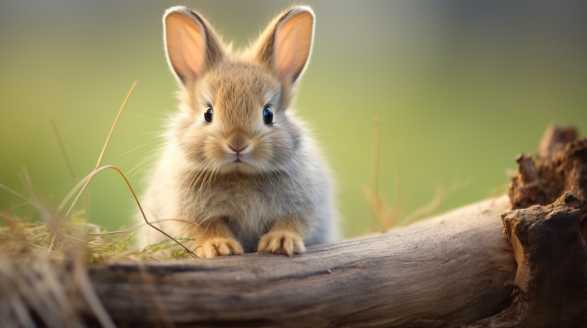
Rabbits are fascinating creatures with unique behaviors that can both confuse and captivate us. One such behavior that often leaves rabbit owners befuddled is the purring phenomenon.
Just like cats, rabbits are capable of purring too. I will look into the intriguing world of rabbit behavior and shed light on the mysteries surrounding this adorable purring habit.
What is Purring in Rabbits?
Definition
Purring is a low, vibrating sound produced by rabbits. It is often a sign of contentment and relaxation, similar to how cats purr when they are happy.
The Science Behind Purring
Purring occurs when rabbits rapidly oscillate their vocal cords. This causes the muscles of their larynx to vibrate, resulting in the distinct purring sound.
Why Do Rabbits Purr?
Contentment and Happiness
One of the primary reasons why rabbits purr is to express contentment. When your rabbit is relaxed and at ease, it may start purring as a form of self-soothing.
Purring, combined with relaxed body postures and gentle grooming, is a surefire indication that your furry friend is feeling content.
Bonding and Affection
Rabbits are social animals that thrive on companionship. When a rabbit purrs, it can also be a way for them to communicate affection and strengthen the bond with their human companions or other rabbits.
It’s their way of saying, “I feel safe and loved with you!”
Seeking Attention
As intelligent creatures, rabbits quickly learn that purring can grab our attention. Suppose your rabbit wants some extra pampering or treats.
It’s almost like their secret weapon to win us over!
When Do Rabbits Purr?
Relaxation Time
Purring in rabbits often occurs during moments of relaxation. Pay close attention to your rabbit when it is resting, especially if it’s in a comfortable and cozy spot or being gently petted.
Grooming Sessions
Rabbits are meticulous groomers and take pride in keeping their fur neat and tidy. As they go about their grooming routine, you might notice them purring softly.
Social Interactions
When rabbits interact with each other or with their human companions, purring can also make an appearance. If you have a bonded pair of rabbits, you might frequently hear them purring while snuggling or grooming one another.
Moments of Joy
Rabbits, like humans, can experience moments of sheer joy. Activities that bring them happiness, such as exploring a new environment, playing with toys, or munching on their favorite treats, might result in joyful purring.
The Vocal Repertoire of Rabbits
While purring is an intriguing vocalization in rabbits, it’s essential to discuss some other sounds they make, providing a comprehensive understanding of their communication repertoire.
Whining
Rabbits employ a high-pitched whining sound when they are afraid, uncomfortable, or seeking attention. This sound is often accompanied by physical signs of distress, such as thumping their back feet or freezing in place.
Growling
Similar to cats and dogs, rabbits can growl when they feel threatened or challenged by another rabbit or perceived danger. Growling is a clear warning sign that your rabbit is agitated and should not be approached.
Grunting
Grunting is another vocalization rabbits use to communicate their displeasure. It signifies annoyance or unhappiness, often expressed when they are disturbed during their resting time or if they feel territorial.
Tooth Purring
Contrary to the purring we discussed earlier, tooth purring is a louder and more intense sound rabbits make when they are experiencing severe pain or discomfort. It’s crucial to identify the difference between this distressing sound and the soothing purring we associate with contentment.
As we journeyed through the enigmatic world of rabbit behavior, we unraveled the incredulous purring phenomenon. From understanding the scientific basis behind purring to uncovering its various contexts and meanings, we have gained insight into this peculiar aspect of rabbit communication.
Purring vs. Other Rabbit Sounds: What Sets It Apart?
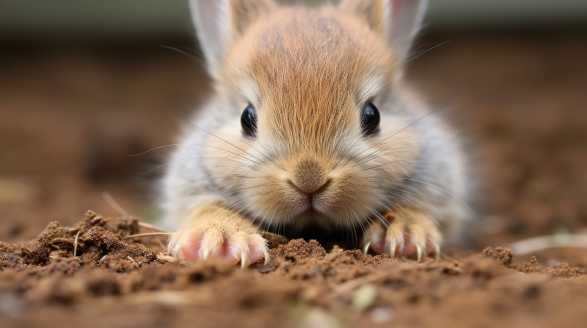
I have always been fascinated by the unique sounds rabbits make. As a rabbit enthusiast, I’ve spent countless hours observing these adorable creatures and deciphering their various vocalizations.
Purring is an intriguing sound that sets rabbits apart from other animals. we will explore what makes purring so special and how it differs from other rabbit sounds.
The Euphony of Purring: A Rabbit’s Symphony
Purring is a gentle, rhythmic sound produced by rabbits that is often associated with contentment and satisfaction. It is a melodious tune that can warm your heart and bring a smile to your face.
Characteristics of Purring
Purring is typically low in volume, similar to a soft buzzing or hum. Rabbits produce this sound by rapidly fluttering their vocal cords while simultaneously exhaling.
Purring is most commonly observed when rabbits are relaxed, comfortable, and feeling safe in their environment.
Rabbit Sounds: A Comprehensive Guide
Rabbits have a repertoire of sounds that help them communicate and express their emotions. While purring is enchanting, there are other sounds rabbits make that are equally captivating.
1. Growling
Growling is a more assertive sound that rabbits use to communicate dominance or irritation. It is a deep, guttural noise that may be accompanied by a firm stance and an erect tail.
Unlike purring, growling is a vocalization that warns others to keep their distance.
2. Thumping
Thumping is a loud noise created by rabbits forcefully thumping their hind legs on the ground. This sound serves as a warning signal and is often used to alert other rabbits of potential danger.
Unlike purring, thumping is a sound that demands attention and causes a burst of adrenaline.
3. Screaming
While rare, rabbits can emit a high-pitched scream that sounds similar to a distressed human cry. Screaming is usually a response to extreme fear or pain.
Unlike purring, which brings a sense of tranquility, screaming is a sound that evokes immediate concern and urgency.
4. Honking
Honking is a sound unique to certain rabbit breeds, such as the Mini Rex. It is a short, nasal noise produced when rabbits are excited or happy.
This delightful sound is often accompanied by binkying—the joyful leaps and twists that rabbits perform when they are truly content. Honking, unlike purring, is a sound associated with sheer bliss and uncontainable excitement.
The Enigma of Purring
Purring remains something of a mystery when it comes to rabbit vocalizations. It is not as extensively studied as sounds found in other animals like cats or dogs.
1. Communication
Rabbits are sociable animals and communicate through a combination of body language and vocalizations. Purring might serve as a way for rabbits to communicate their relaxed state to other rabbits, signaling that there is no immediate threat nearby.
2. Contentment
Similar to cats, purring in rabbits is often associated with contentment. When a rabbit purrs, it may indicate that it feels safe, secure, and happy in its environment.
It’s a way for rabbits to express their satisfaction and well-being.
3. Bonding
Purring may also play a role in bonding between rabbits and their human companions. As we know, rabbits are highly sensitive animals and can form deep connections with their caregivers.
It is a beautiful way for rabbits to reciprocate the love and care they receive.
Purring sets rabbits apart from other animals with its enchanting melody and calming effect. While other sounds like growling, thumping, screaming, or even honking have their significance, purring provides a unique experience that resonates with tranquility, contentment, and trust.
The Purring Ritual: Insights into Rabbit Parenting and Offspring Bonding
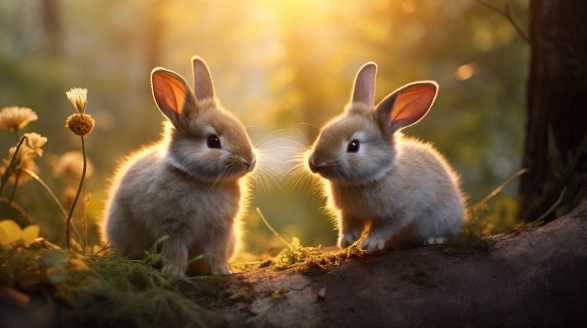
Have you ever wondered how rabbits communicate with their young? Or what kind of rituals they perform to strengthen the bond with their offspring?
we will delve deep into the realm of rabbit behavior, exploring the captivating dynamics of their parenting and offspring bonding.
Understanding Rabbit Parenting
Rabbit parenting is a marvel of nature, characterized by their constant vigilance and tender care towards their young ones. Let’s explore some key insights into their incredible parenting skills:
- Nesting: Female rabbits, also known as does, meticulously build nests to provide a safe and comfortable haven for their soon-to-arrive babies. They gather soft materials like straw, leaves, and even their own fur, creating a cozy environment where their offspring can thrive.
- Gestation Period: A fascinating aspect of rabbit parenting is the comparatively short gestation period, which typically lasts around 30 days. This remarkable efficiency allows rabbits to maintain large litters and ensure the survival of their species.
- Birth and Maternal Care: Once the offspring, known as kits, are born, the doe continues to display immense dedication. She nurses her kits, providing them with essential nutrients through her milk. This process helps strengthen the bond between the mother and her young ones.
The Enigmatic Purring Ritual
Now, let’s shine a spotlight on the captivating purring ritual observed in rabbit parenting. This enchanting behavior is pivotal in strengthening the emotional connection between the doe and her kits.
- Purring Sounds: The purring ritual is characterized by the unique vocalizations emitted by the doe. These soft, vibrating sounds resemble a gentle purr, signifying comfort and contentment. Rabbit purring is often associated with moments when the mother is interacting with her kits, creating a warm and secure environment for them.
- Nuzzling and Licking: Alongside the purring, the doe also engages in nuzzling and licking her kits. This physical contact is a vital component of the purring ritual, fostering a sense of affection and security. The doe’s gentle touch reassures the kits, making them feel loved and protected.
- Bond Reinforcement: The purring ritual plays a significant role in the bonding process between the doe and her kits. It not only establishes a strong emotional connection but also creates a sense of trust and reliance. This bond is crucial for the survival and development of the offspring.
The Benefits of the Purring Ritual
Understanding the benefits of the purring ritual sheds light on its importance in rabbit parenting. Let’s explore the advantages this ritual brings to both the doe and her kits:
- Stress Reduction: Purring has a soothing effect on the kits, reducing their stress levels and creating a calm atmosphere. This tranquility enhances their overall well-being and promotes healthy growth.
- Social Learning: Through the purring ritual, the kits learn how to communicate and interact with their mother. This social learning experience is vital for their future interactions with other rabbits and enables them to develop essential social skills.
- Bond Strengthening: The purring ritual strengthens the bond between the doe and her kits. This connection fosters trust, which is essential for the survival of the kits. A strong bond ensures that the mother can effectively protect and care for her young ones.
The purring ritual in rabbit parenting is a mesmerizing phenomenon that showcases the remarkable abilities of these furry creatures. The unique sounds, nuzzling, and bonding it encompasses provide invaluable insights into the intricate dynamics of rabbit parenting and offspring bonding.
The world of rabbit parenting truly is a realm, filled with wonder and love.
Conclusion
Wow, what an adventure we’ve had exploring the world of rabbit communication and uncovering the secrets behind their purring language! Throughout this journey, we’ve discovered that purring is not just reserved for cats – rabbits have their own unique purring abilities too.
But purring is just the tip of the iceberg in the vast realm of rabbit communication.
We’ve delved into the fascinating spectrum of sounds rabbits make, from growling to screaming to whining. Each sound carries its own meaning and portrays a different emotion or message.
But it’s not just about understanding their sounds and body language. Building a strong bond with a rabbit involves observation, positive reinforcement, and gentle physical contact.
And remember, not every rabbit purrs. Genetics, breed differences, environmental factors, and individual personality all play a role in whether a rabbit will purr or not.
So, as we wrap up this adventure, let’s cherish the precious moments of interacting with our rabbits. Whether it’s enjoying a purring session, witnessing their joy through binkying and honking, or observing their loving care and bonding with their young ones, our fluffy companions continue to amaze us every day.
Thank you for joining me on this journey into the enchanting world of rabbit communication. May your bond with your furry friends grow stronger, and may you always be enchanted by the beautiful sounds and behaviors of these magnificent creatures.
Frequently Asked Questions
Do rabbits purr?
Yes, rabbits do purr! Contrary to popular belief, rabbits have the ability to purr just like cats.
Why do rabbits purr?
Rabbits purr primarily as a sign of contentment and relaxation. When they feel safe and comfortable in their environment, they may express their happiness through purring.
How can I tell if my rabbit is purring?
To determine if your rabbit is purring, you can listen closely for a gentle teeth-grinding or tooth-clicking sound. They usually produce this sound when they are relaxed, being gently petted, or enjoying your company.
Are all rabbits capable of purring?
Yes, all rabbit breeds have the ability to purr. However, the frequency and intensity of purring may vary among individuals.
It depends on the rabbit’s personality and comfort level.
Can rabbits purr when they are scared or in pain?
No, rabbits do not typically purr when they are scared or in pain. Purring is mainly associated with relaxation and contentment in rabbits.
In such cases, it’s essential to observe their behavior closely and consult a veterinarian if necessary.
Do rabbits purr similar to cats?
While both cats and rabbits have the ability to purr, the actual sound differs between the two species. Cats produce a more recognizable and consistent purring sound, whereas rabbits purr in a less consistent and more teeth-grinding or tooth-clicking manner.
Can I encourage my rabbit to purr?
Yes, you can encourage your rabbit to purr by creating a calm and comfortable environment for them. Provide them with a cozy, quiet space where they feel safe and secure. Gentle petting, soothing voices, and spending quality time with your rabbit can also help stimulate purring. However, always respect your rabbit’s boundaries and individual preferences.
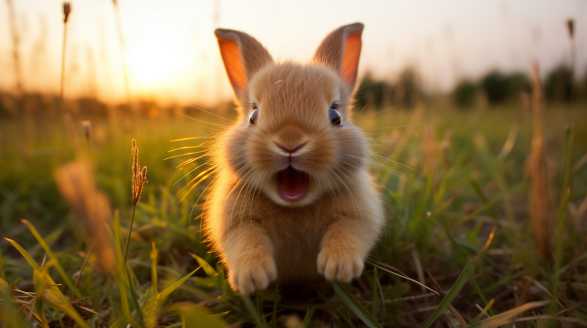
Do Rabbits Fart
Introduction Do rabbits fart? Let’s find out if Rabbits let them rip! Picture this: fluffy bunnies hopping through meadows, nibbling on carrots, their adorable faces innocent and unsuspecting. Little did we know they possessed the mysterious ability to unleash a gaseous fragrance that would captivate our senses and leave us in awe. Curiosity sparked, I […]
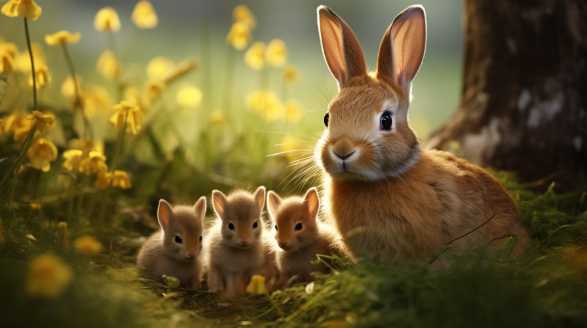
When To Wean Rabbits
Introduction Are you ready to embark on the journey of transitioning your baby to solid food? Well, you’re in the right place! I understand that this can be a confusing and slightly overwhelming phase, but fear not! I’m here to guide you every step of the way. As a parent, one of the most thrilling […]
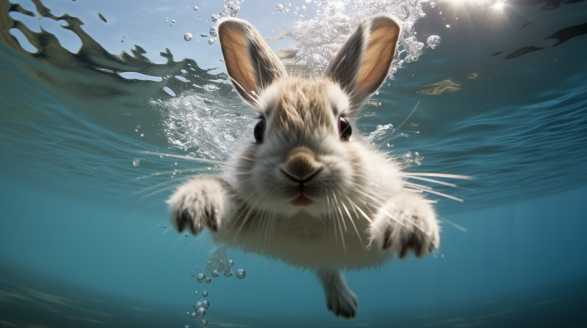
Can Rabbits Swim
Introduction Can rabbits swim? Let’s find out. Together, we’re about to embark on an underwater adventure to uncover the truth behind rabbits and their hidden aquatic abilities. Picture this: fluffy little rabbits gracefully gliding through the water, their ears adorably upright as they navigate the depths below. Sounds pretty incredible, right? It’s like discovering a […]
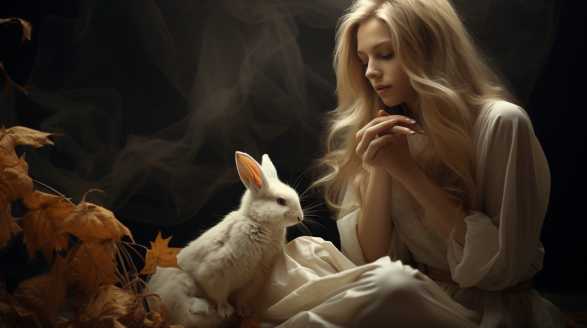
Rabbits In Mythology
Introduction Hey there, fellow adventure-seekers! Get ready for a wild ride as I take you on a journey through the world of rabbits in mythology. So, hop on board as we explore the diverse tales and symbolism surrounding these enigmatic creatures. Picture this: a mystical land filled with gods and goddesses, mischievous tricksters, and chilling […]
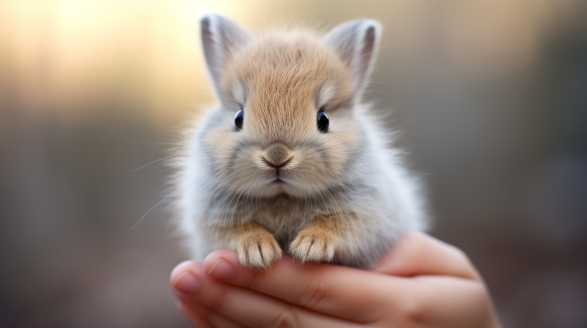
Do Rabbits Know Their Names
Introduction Have you ever wondered if your furry rabbit friend can actually recognize its name? As a proud rabbit owner myself, I’ve always pondered this intriguing question. I’ve done some thorough research, gathered expert opinions, and even tapped into my own personal experiences to bring you all the juicy details. We all know that rabbits […]
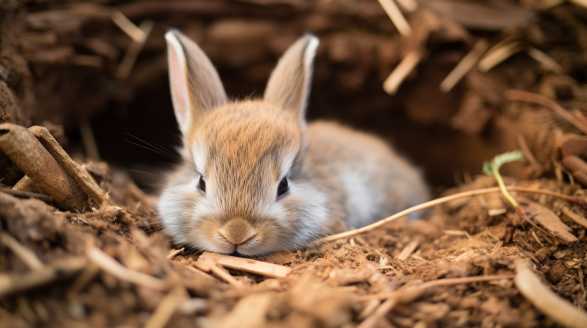
Is Aspen Bedding Safe For Rabbits
Introduction Hey there rabbit owners! Are you looking for the safest and most comfortable bedding option for your fluffy friend? we’ll be diving into the topic of aspen bedding for rabbits and exploring its safety and benefits. As a passionate rabbit owner myself, I understand the importance of choosing the right bedding material for our […]
